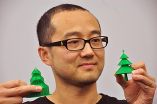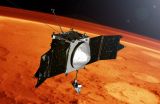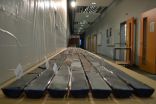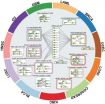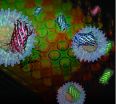INFORMATION:
The research is supported by NSERC and GRAND NCE funding. The first year of Ruizhen Hu's SFU visit was supported by the China Scholarship Council. The 3D printer was purchased for the GrUVi lab, through an NSERC Research, Tools and Instruments (RTI) grant.
As Canada's engaged university, SFU is defined by its dynamic integration of innovative education, cutting-edge research and far-reaching community engagement. SFU was founded almost 50 years ago with a mission to be a different kind of university--to bring an interdisciplinary approach to learning, embrace bold initiatives, and engage with communities near and far. Today, SFU is a leader amongst Canada's comprehensive research universities and is ranked one of the top universities in the world under 50 years of age. With campuses in British Columbia's three largest cities--Vancouver, Surrey and Burnaby--SFU has eight faculties, delivers almost 150 programs to over 30,000 students, and boasts more than 130,000 alumni in 130 countries around the world.
Simon Fraser University: Engaging Students. Engaging Research. Engaging Communities.
Photos: http://at.sfu.ca/iMDjDh END
New algorithm a Christmas gift to 3-D printing -- and the environment
2014-12-15
(Press-News.org) Just in time for Christmas, Simon Fraser University computing science professor Richard Zhang reveals how to print a 3D Christmas tree efficiently and with zero material waste, using the world's first algorithm for automatically decomposing a 3D object into what are called pyramidal parts.
A pyramidal part has a flat base with the remainder of the shape forming upwards over the base with no overhangs, much like a pyramid. A pyramidal shape is optimal for 3D printing because it incurs no material waste and saves print time.
The algorithm promises to become a big deal in the world of 3D printing, and also has applications for designing molds and for casting.
Zhang, a computer graphics expert specializing in geometric modeling and processing, developed the algorithm with PhD candidate Ruizhen Hu, an international student from Zhejiang University in China.
Their research paper, Approximate Pyramidal Shape Decomposition, was published this month in ACM Transaction on Graphics, the world's leading graphics journal. As well, Hu presented their research at a major graphics conference, SIGGRAPH Asia, this month in Shenzhen, China.
In 3D printing, the printer deposits melted plastic layer by layer in a bottom-up fashion. If the shape has an overhang, such as a tree branch, extra material has to be printed beneath it as support. This extra plastic is waste material and must be removed, which can be time consuming and difficult. And removing waste material that supports an object's hollow interior or tiny fragile parts, like the star atop a Christmas tree, can be almost impossible without causing breakage.
"Coming up with a practical algorithm to decompose 3D objects into the smallest possible number of pyramidal parts was quite a challenge," says Zhang.
"Importantly, it is impractical for most real-world objects to be broken into exactly pyramidal parts since this would result in too many parts," he says.
"Ruizhen came up with a really clever way of transforming the problem to obtain an effective solution."
The new algorithm partitions the object into a small number of nearly pyramidal parts that can be 3D-printed with little or no material waste.
These printed parts can then be glued together to form the finished object. The Christmas tree, for example, is divided in half for fabrication, and then glued together.
In molding and casting, the ideas are similar, says Zhang. "If the molded or cast parts are pyramidal, then removing the mold or cast after fabrication would not result in any breakage," he says.
In keeping with the Christmas theme, he suggests chocolatiers could use the algorithm to design chocolate molds for Christmas trees or reindeer.
ELSE PRESS RELEASES FROM THIS DATE:
UTSW researchers identify a therapeutic strategy that may treat a childhood neurological disorder
2014-12-15
DALLAS - Dec. 15, 2014 - UT Southwestern Medical Center researchers have identified a possible therapy to treat neurofibromatosis type 1 or NF1, a childhood neurological disease characterized by learning deficits and autism that is caused by inherited mutations in the gene encoding a protein called neurofibromin.
Researchers initially determined that loss of neurofibromin in mice affects the development of the part of the brain called the cerebellum, which is responsible for balance, speech, memory, and learning.
The research team, led by Dr. Luis F. Parada, Chairman ...
Hazy road to Mecca
2014-12-15
Irvine, Calif., Dec. 15, 2014 - Dangerously high levels of air pollutants are being released in Mecca during the hajj, the annual holy pilgrimage in which millions of Muslims on foot and in vehicles converge on the Saudi Arabian city, according to findings reported today at the American Geophysical Union meeting in San Francisco.
"Hajj is like nothing else on the planet. You have 3 to 4 million people - a whole good-sized city - coming into an already existing city," said Isobel Simpson, a UC Irvine research chemist in the Nobel Prize-winning Rowland-Blake atmospheric ...
NASA's MAVEN mission identifies links in chain leading to atmospheric loss
2014-12-15
Early discoveries by NASA's newest Mars orbiter are starting to reveal key features about the loss of the planet's atmosphere to space over time.
The findings are among the first returns from NASA's Mars Atmosphere and Volatile Evolution (MAVEN) mission, which entered its science phase on Nov. 16. The observations reveal a new process by which the solar wind can penetrate deep into a planetary atmosphere. They include the first comprehensive measurements of the composition of Mars' upper atmosphere and electrically charged ionosphere. The results also offer an unprecedented ...
Research: Two drugs before surgery help women with triple-negative breast cancer
2014-12-15
A breast cancer specialist and clinical researcher at Women & Infants Hospital of Rhode Island presented research yesterday at the 2014 San Antonio Breast Cancer Symposium showing that adding either the chemotherapy drug carboplatin or the blood vessel-targeting drug bevacizumab to the standard treatment of chemotherapy before surgery helped women who have the basal-like subtype of triple-negative breast cancer.
"We found that adding either carboplatin or bevacizumab to standard preoperative chemotherapy increased pathologic complete response rates for women with basal-like ...
PNNL talks climate, carbon, drinking water and the nexus of health and environment at AGU
2014-12-15
Scientists from the Department of Energy's Pacific Northwest National Laboratory will present a variety of research at the 2014 American Geophysical Union Fall Meeting, which runs Monday, Dec. 15 through Friday, Dec. 19 at the Moscone Convention Center in San Francisco. Noteworthy PNNL research presentations include the following topics:
Even with global warming cold air outbreaks will remain
Just because the climate is warming doesn't mean Cold Air Outbreaks are going away, especially in Southwestern Canada and Northwestern United States. Overall, global climate models ...
Nuclear should be in the energy mix for biodiversity
2014-12-15
Leading conservation scientists from around the world have called for a substantial role for nuclear power in future energy-generating scenarios in order to mitigate climate change and protect biodiversity.
In an open letter to environmentalists with more than 60 signatories, the scientists ask the environmental community to "weigh up the pros and cons of different energy sources using objective evidence and pragmatic trade-offs, rather than simply relying on idealistic perceptions of what is 'green' ".
Organized by ecologists Professor Barry Brook and Professor Corey ...
Past global warming similar to today's
2014-12-15
SALT LAKE CITY, Dec. 15, 2014 - The rate at which carbon emissions warmed Earth's climate almost 56 million years ago resembles modern, human-caused global warming much more than previously believed, but involved two pulses of carbon to the atmosphere, University of Utah researchers and their colleagues found.
The findings mean the so-called Paleocene-Eocene thermal maximum, or PETM, can provide clues to the future of modern climate change. The good news: Earth and most species survived. The bad news: It took millennia to recover from the episode, when temperatures rose ...
Algorithm identifies networks of genetic changes across cancers
2014-12-15
PROVIDENCE, R.I. [Brown University] -- Using a computer algorithm that can sift through mounds of genetic data, researchers from Brown University have identified several networks of genes that, when hit by a mutation, could play a role in the development of multiple types of cancer.
The algorithm, called Hotnet2, was used to analyze genetic data from 12 different types of cancer assembled as part of the pan-cancer project of The Cancer Genome Atlas (TCGA). The research looked at somatic mutations -- those that occur in cells during one's lifetime -- and not genetic variants ...
Neuronal circuits filter out distractions in the brain
2014-12-15
Cold Spring Harbor, NY - The next time you are in a crowded room, or a meeting, or even at the park with your kids, take a look around. How many people are on their phone? Distractions invade every aspect of our lives. Status updates, text messages, email notifications all threaten to steal our attention away from the moment. While we fight the urge to check the phone, our brains are making constant judgment calls about where to focus attention. The brain must continually filter important information from irrelevant interference.
Scientists have hypothesized for decades ...
Promising new method for rapidly screening cancer drugs
2014-12-15
AMHERST, Mass. - Traditional genomic, proteomic and other screening methods currently used to characterize drug mechanisms are time-consuming and require special equipment, but now researchers led by chemist Vincent Rotello at the University of Massachusetts Amherst offer a multi-channel sensor method using gold nanoparticles that can accurately profile various anti-cancer drugs and their mechanisms in minutes.
As Rotello and his doctoral graduate student Le Ngoc, one of the lead authors, explain, to discover a new drug for any disease, researchers must screen billions ...
